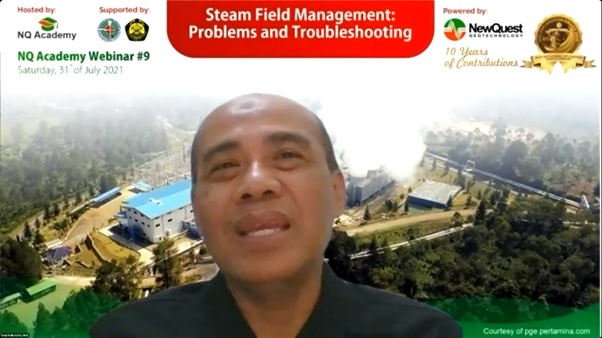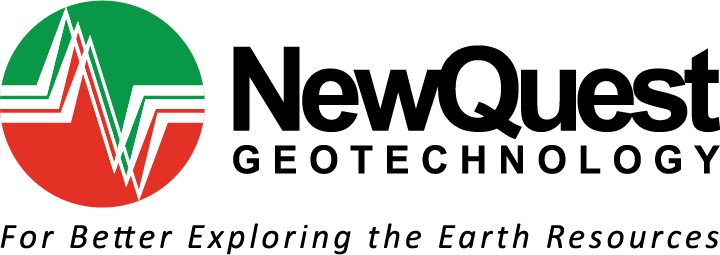Review of NQ Academy Webinar #9: Steam Field Management: Problems and Troubleshootings
Monday, 16 August 2021

NQ Academy Webinar #9 has been held on July 31, 2021. The webinar was hosted by Dr. Yunus Daud, Founder of NewQuest Geotechnology. The event was discussing an interesting topic about “Steam Field Management: Problems and Troubleshootings” presented by Mr. Tavip Dwikorianto M.Si. He was Vice President of Project Development in PGE and also experienced as General Manager of Kamojang geothermal field.
At the opening of the webinar, the Host opened the webinar by telling the current condition of Indonesia geothermal energy. Indonesia has a large geothermal resources of 23.9 GW and has installed capacity of 2,175 MW which currently occupies the second position in the world and still moving forward to become the largest geothermal power producer in the world. But the next important thing after this is the excellences in technology, both in exploration and utilization as well as capacity building which could be shared to the world.
Geothermal energy development should be renewable and sustainable. The meaning of renewable and sustainable is not only to fulfill the project duration in the contract, but should surpass it, even until hundreds of years, like the geothermal which has been developed in Larderello started from 1904 and still production until now.
The main things that were conveyed in the speaker presentation at the webinar were how to do a good steam field management. For examples, several geothermal fields that have been operating for
The speaker shared information about the benefits in conducting proper steam field management on several field which have been operating for more than more than 35 years, such as Larderello (Italy), Wairakei (New Zealand), The Geysers (USA), Cerro Prieto (Mexico), Krafla (Iceland), Hatchobaru (Japan), Tiwi (Philippine), Kizildere (Turkey), as well as Kamojang (Indonesia). The important things in this webinar cover the steam field management concept, the flow in handling steam field management, and the problems and its troubleshootings.
There are three sustainable indicators: environment, economic business, and social aspects. These indicators must be considered in the management of the geothermal field and should be integrated. Sustainable management can be obtained if the production rate is below its production capacity, not over capacity production.
In steam field management, there are four things which need to be well monitored, since it reflect the reservoir conditions. Those are P&T changes, production decline, formation physical changes, & fluid chemistry changes. Monitoring program could be done by applying PTS measurement, production & reinjection monitoring, fluid lab analysis, Mirogravity & MEQ survey, and Interwell tracer test. These programs will give input data for dynamic reservoir characterization and the results will be updated in the reservoir modeling to see how the conditions of permeability, porosity, etc. From these data, the optimal production and reinjection strategy will be obtained. So that sustainability can be maintained.
Several problems that arise in steam field are related to technical issues such as production decline, expensive costs for handling scaling/corrosion, and managerial problems related to lack of experience and expertise of geothermal operators.
Production decline could be caused by pressure decline and/or temperature depletion. The solution?’=o these problems are reinjection into the reservoir to increase the reservoir fluid so that the pressure will be maintained. This should be conducted carefully, to make sure the injected fluid not caused thermal breakthrough which decreasing the reservoir temperature.
Scaling problem could be found on the production or reinjection pipeline. Several solutions can be done, including mechanically adjusting the pH and temperature, high-pressure reinjection, using cooling pond, and adding inhibitor solution.
Corrosion problem is closely related to the acidic reservoir fluid. To prevent corrosion, several efforts can be applied such as using corrosion-resistant material, corrosion-resistant cement, cathodic protection, corrosion inhibitors, and pH modification.
The conclusion that can be drawn from the webinar is sustainable geothermal field needs good steam field management by kept wells and field monitoring system to get update reservoir data for building the optimum production and reinjection strategies.
